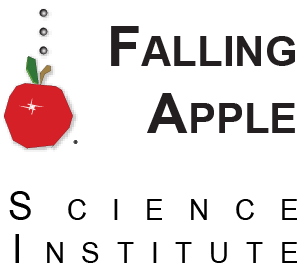Falling Apple Science Institute is a nonprofit organization on a mission to promote understanding of natural science. Your contributions support:
1. Research on how the basic ideas of science were discovered, which informs how the ideas should be taught.
2. Development of books and equipment required to learn (and teach) the fundamental ideas of science in a first-handed way, culminating in the completion of The Periodic Table of the Sciences.
David Harriman, Director
David@fallingapple.org
David Harriman is the big picture guy at Falling Apple. He knows physics, the history of science, and philosophy, a rare combination, but one that is required to intelligently select the right topics and establish the logical order of real scientific knowledge.
David began his pursuit of clarity concerning mankind’s understanding of the physical world by mining the existing state of the art from top universities: the University of Maryland (MS in physics), Claremont Graduate University (MA in philosophy), UC Berkeley (BS physics).
He tested his knowledge on the big stage, working as an applied physicist analyzing errors in the gravitational models used by inertial navigation systems, i.e. rocket science.
Eventually, he gravitated toward writing about and teaching the philosophy of science. David has published articles dealing with the work of Galileo and Newton, with science during the 18th century Enlightenment, with the nature of experimental method, and with the development of the atomic theory of matter. His book, The Logical Leap: Induction in Physics, offers profound new insights into the nature of the scientific discovery process and provides the foundation for our comprehensive explanation of inductive science.
Tom VanDamme, Executive Director
Tom@fallingapple.org
Tom VanDamme is Falling Apple’s engineer, explainer, and Chief “I don’t get it” Officer. When David Harriman says that astronomy is necessary to understand physics and outlines the key discoveries from ancient Greece, Tom invents a Sun Puppet and a Horizon Globe to make a clear understanding of the subject accessible to non-rocket scientists (including himself).
To prepare for this role, Tom designed and built farm equipment, race cars, light fixtures, truck brakes, car axles, aircraft wiring, and even a robot (with lasers). He studied engineering at Michigan Tech (MS mechanical engineering) and business at USC (MBA).
The joy of explaining things has kept him active in teaching throughout his journey. He taught physics and all levels of math at his hometown college in Michigan, served as principal and science teacher at a private K-8 school he co-founded in California, taught GMAT and GRE prep for Kaplan, and coached Dale Carnegie courses.
The Partnership
David and Tom met when they both attended a seminar in 1996, five years before their first professional collaboration (significantly, the seminar topic was inductive thinking). Later, when Tom started a K-8 school, he brought David in to design the science courses. At the time, neither of them had yet grasped the enormous task that lay before them.
In a dramatic improvement over standard school courses, David presented science as a process of discovery using the actual history as a guide. The resulting course was a huge but qualified success. Student enthusiasm was high, and their grasp of the main theories and ability to solve test questions was definitely above-average. But David and Tom began to see that the standard way we hold scientific knowledge is different from the way Galileo and Newton held it. The content of their minds gave them a “green light” to further discovery whereas the content of ours led to “I’ll have to check my notes.”
In 2008, we officially founded Falling Apple Science Institute as a 501(c)(3) nonprofit corporation so that tax-deductible donations could be collected to fund development of a radically improved approach to understanding science. Shortly thereafter, the Periodic Table of the Sciences was born and work began on filling out the squares.
Through the generous funding of donors, and the anonymous toil of a few dedicated volunteers, the first two levels of Astronomy have been completed and work has commenced on the Physics I vertical. David continues to seek out and explain the path of scientific discovery, and Tom continues to say “I don’t get it,” -- until he does.
